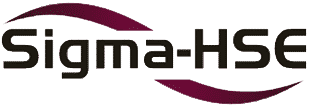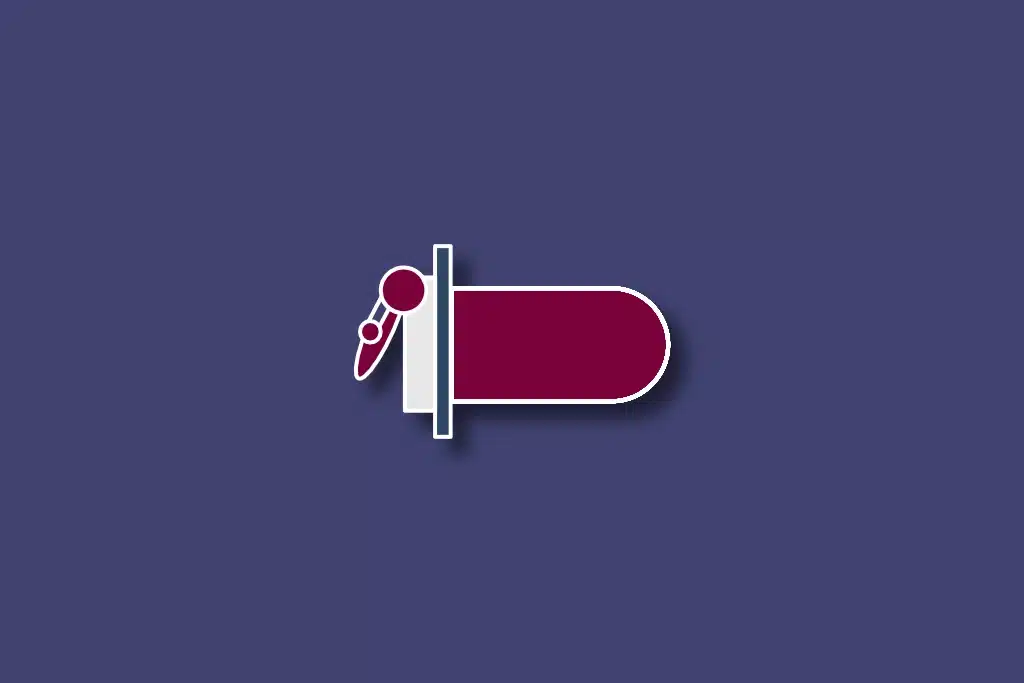ATEX is the name given to the European Directives to ensure that employees are protected from fires and explosions caused by work activity. Compliance is implemented in the UK through the Dangerous Substances and Explosive Atmospheres Regulations 2002 (DSEAR).
Alongside DSEAR/ATEX, another IEH (Industrial Explosion Hazards) Risk Assessment that can be undertaken is the Non-Electrical Equipment Ignition Risk Assessment (NEIRA) which can be used to determine Equipment Protection Level (EPL) in hazardous zones to designate equipment ‘safe’ for use.
This article outlines the general steps of the DSEAR/ATEX compliance assessment, with a particular focus on non-electrical ignition sources. By exploring the identification of flammable atmospheres, pinpointing potential ignition sources, and establishing a solid basis of safety, we aim to provide a short guide to the mitigation of explosion hazards via the NEIRA risk assessment methodology.
DSEAR and Non-Electrical Ignition Sources
There are three main steps to completing an ATEX or DSEAR assessment.
Step 1 – Flammable Atmospheres
The first step is to find where flammable atmospheres are and how they can create explosive atmospheres. These are called hazardous areas and are found by zonal classification. This determines the size of the flammable atmosphere which typically 1 to 3 metres external to equipment or within equipment itself.
Step 2 – Ignition Sources
The second step is to find ignition sources. These can be equipment, items, metal plants, personnel and even processes. In industry there are 13 types of ignition sources, but the four most common are hot surfaces, electrostatic discharges, mechanical sparking and unsuitable electrical equipment.
Step 3 – Basis of Safety
Once you have found the ignition sources, the third step is to establish a basis of safety to prevent these ignition sources from becoming effective. At Sigma-HSE we have broken the basis of safety down into three main types: Avoidance of Ignition Sources, Explosion Prevention and Explosion Protection.
Common measures that are part of a basis of safety could be ATEX rated equipment, earthing all metal plants or an earthing system in hazardous areas. It is crucial to select appropriate equipment and protective systems for specific zoned areas to mitigate ignition sources and ensure compliance with safety regulations.
Hazardous Zones and Potentially Explosive Atmospheres
Hazardous Zone Classifications are based on the frequency of the occurrence of a potentially explosive atmosphere.
Zone 0 or 20: If a potentially explosive atmosphere is present all the time or for long periods it’s Zone 0 for flammable gas or vapours and Zone 20 for combustible dust.
Zone 1 or 21: If the potentially explosive atmosphere occurs during normal operations, it’s Zone 1 for vapours or Zone 21 for dust. An example would be filling the manway of a reactor during normal operations for a short period.
Zone 2 or 22: This is the lowest risk and occurs under abnormal conditions, such as leaks, spills or ruptures. For example, in a dust collector a filter rip could cause powder carry over. This zone does not occur often.
Types of Electrical Equipment
There is a formal process to determine Equipment Protection Level (EPL) for all equipment designed to be used in explosive atmospheres, and it can be found in the standard BS EN 80079-36. The NEIRA risk assessment methodology in this standard will help you achieve the correct EPL.
Each equipment type under BS EN 80079-36 addresses different risks associated with non-electrical sources of ignition in explosive atmospheres using a scale of A-H.
Equipment Type A – Enclosure or casing – Equipment with a protective enclosure or casing to prevent the explosion of the atmosphere.
Equipment Type B – Sealed equipment – Equipment that is totally sealed to prevent the entry of the atmosphere.
Equipment Type C – Equipment with moving parts – Equipment with moving parts that could generate heat or sparks.
Equipment Type D – Equipment with hot surfaces – Equipment that can generate high surface temperatures.
Equipment Type E – Equipment producing sparks – Equipment that can produce sparks during normal operation.
Equipment Type F – Equipment with electrostatic discharge potential – Equipment that can accumulate static electricity and discharge it.
Equipment Type G – Equipment with chemically reactive materials – Equipment containing or handling reactive chemicals that can explode.
Equipment Type H – Equipment that can produce external effects – Equipment that can cause external effects that can ignite, such as vibrations or impact.
Typical equipment in these categories includes fans, pumps, and conveyor systems, which must be assessed for potential ignition risks.
By using the BS EN 80079-36 standard you can mitigate risks through design and construction measures specific to equipment types.
Dates and Legacy Equipment
The BS EN 80079-36 standard is used by designers of new equipment but can also be used to assess legacy equipment, specifically pre-ATEX equipment (July 2003).
It is crucial to consider equipment upset conditions during safety assessments, especially for non-electrical equipment used in processing flammable materials. Identifying ignition sources during routine operations and potential equipment failures is essential to control these risks through the NEIRA assessment.
Depending on the equipment’s category and the zone it’s in you can use the NEIRA risk assessment methodology post 2003. Although best practice is to replace existing equipment with ATEX rated equipment (if installed after 2003) you can still use the same methodology for Category 3 equipment installed after this date (or under special circumstances).
In the pharmaceutical industry for example equipment validation can be long-winded. A client may find out they are using flammable material late in the process. Although not totally compliant you can still do the NEIRA risk assessment to show the equipment is safe or deem it safe even if it’s not certified as such.
NEIRA Assessment Methodology
The NEIRA risk assessment methodology is like other risk assessment methodologies, HAZOP, HAZID, SIL or LOPA.
This would involve the cause, the scenario, the safeguard before the risk level.
Step 1: Identify Ignition Sources
Like an ATEX/DSEAR risk assessment the first step of a NEIRA is to identify the types of ignition sources, including those from non-electrical equipment. There are 13 common ignition sources in industry but the NEIRA focuses on the three relevant ignition sources: hot surfaces, mechanical sparking and static electricity/electrostatic discharges.
Note: Electrical ignition sources have their own standards and compliance measures and are not included in NEIRA.
Step 2: Scenarios for Each Ignition Source
The next step is to outline the hazardous scenarios and reasons for each ignition source. For hot surfaces a scenario could be a bearing during normal operation that gets hot due to friction. It is crucial to consider expected failure modes to ensure comprehensive risk mitigation.
Step 3: Safeguards
Each hazardous scenario must have a corresponding safeguard. Safeguards can be maintenance procedures and instrumentation i.e., temperature monitoring, vibrational analysis, or sensors. These safeguards must mitigate the risk posed by the identified ignition sources.
Zonal Classification, Protective Systems, and Equipment Malfunctions
As mentioned earlier ATEX/DSEAR assessments use zonal classifications Zone 0/20, 1/21 and 2/22. Zones 0 and 20 are the most hazardous and correspond to the highest protection levels (e.g. GA or DA). Zones 2 and 22 are less hazardous and correspond to lower protection levels (e.g. GC or DC).
For each zonal classification you must consider scenarios where ignition sources can be affected under three types of malfunctions: normal operating parameters, expected malfunctions and rare malfunctions.
Types of Malfunctions and Expected Failure Modes
Normal Operations: Scenarios during everyday use.
Expected Malfunctions: More likely malfunctions, e.g. a thermistor failing in a motor and the motor overheating and transferring heat through the shaft into the blades of mechanical equipment.
Rare Malfunctions: Less likely but possible malfunctions, e.g. something snapping or breaking.
If for example you are assessing a piece of equipment like a screw conveyor with a zonal classification of Zone 2/22 you only need to consider scenarios for normal operations.
Scenarios for Malfunctions
Each type of malfunction will have its own scenario. An expected malfunction might be metal ingress into a dust handling system so you would need to provide a reason and justification for your safeguards. This could be for example the use of an upstream magnetic separator or following of strict GMP procedures.
Example of Category 1 Equipment
A handler/mixer that handles flammable gases, flammable vapours, and flammable dusts. Flammable liquids also pose significant risks in such environments, necessitating careful handling and processing.
This type of equipment would require several safeguards against common ignition sources, e.g. vibrational monitoring, welded impellers and solid shafts. The maintenance manuals would also specify procedures for maintaining the equipment to ensure safety.
This is a hypothetical example but similar to equipment that is typically assessed from a NEIRA perspective. As it is a category 1 piece of equipment it would usually operate in Zone 0 or Zone 20 which is a higher risk zone and requires more stringent safeguards.
Now consider the scenario where the shaft of the blender breaks off. To mitigate this risk you would have safeguards such as vibrational monitoring and maintenance procedures. This could be checking the bearings at regular intervals and monitoring for trapped powders. Temperature monitoring using thermocouples in the bearings would be another safeguard.
This example illustrates the level of integrity required for ATEX-rated equipment, ensuring that even rare malfunctions are anticipated and addressed with appropriate safeguards.
Manage and Mitigate Non-Electrical Ignition Sources
Managing and mitigating non-electrical ignition sources can be a challenge for many businesses in the process industry.
We can ensure safety in potentially explosive atmospheres by applying meticulous attention to detail and adherence to a range of national and international safety standards. We can also aid you in the identification of flammable atmospheres, potential ignition sources, and the establishment of a suitable basis of safety.
Our consultants can also use and implement a range of risk assessments and standards such as BS EN 80079-36 and NEIRA methodologies to enhances your management of non-electrical ignition sources.



